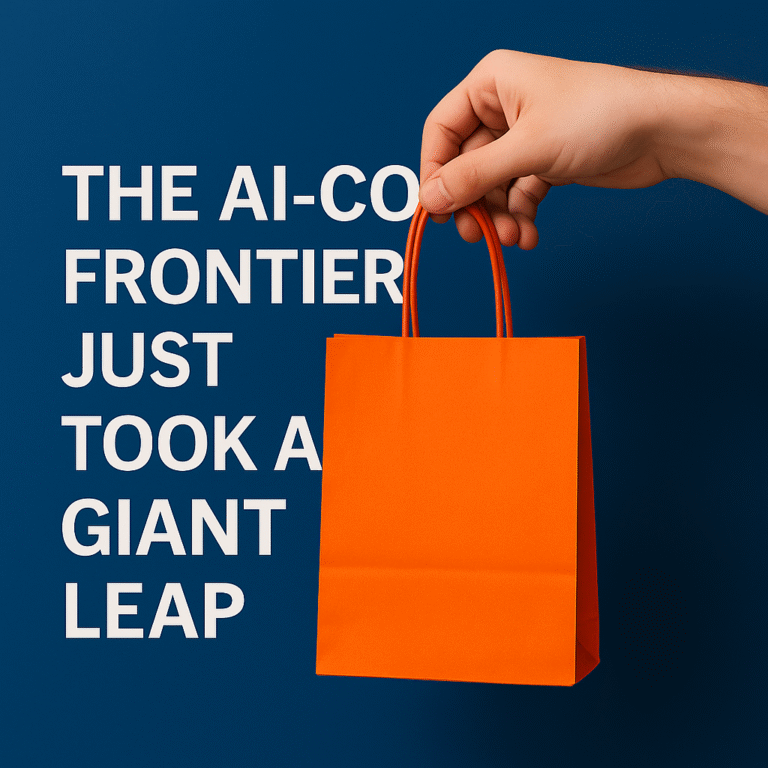
The AI-Commerce Frontier Just Took a Giant Leap
The confluence of artificial intelligence and digital commerce is no longer a speculative future – it’s happening now. At Xyra Group, we observe more than trends; we track tectonic shifts. Here are the developments rewriting the rules:
1. ChatGPT Instant Checkout: Conversation Becomes Transaction
OpenAI has launched Instant Checkout inside ChatGPT, allowing U.S. users to buy directly from Etsy sellers without ever leaving the chat interface.
Shopify is set to follow: merchants will be able to integrate seamlessly, eliminating clicks, redirects, and friction.
Under the hood lies the Agentic Commerce Protocol (ACP), co-developed with Stripe, a new open standard designed to let AI agents, users, and merchants collaborate securely on transactions.
This is not just another checkout plugin – it’s an infrastructure play.
Merchants pay a commission; users are not charged extra.
Stocks of Etsy and Shopify jumped after the announcement.
Implication for Xyra Group and its portfolio:
-
The buyer interface is shifting. If ChatGPT becomes a standard shopping layer, brands must optimize for agentic visibility rather than SEO alone.
-
Control over product metadata, availability, UX design, and ranking logic becomes even more critical.
-
Early adoption or integration with ACP may deliver disproportionate advantage.
-
Revenue models will shift – margins will be challenged by platform fees, but reach expands dramatically.
2. Generative AI Traffic Is Exploding – The Funnel Collapses
Adobe reports generative AI–powered traffic to retail sites surged 4,700% year-on-year in July 2025.
This is not marginal traffic – it’s becoming a primary discovery and shopping channel.
Consumers are increasingly asking AI agents to suggest products, compare options, and initiate purchases. The line between search, recommendation, and checkout is blurred.
Brands that fail to feed their AI “back end” (rich metadata, structured content, reviews, product differentiation) risk invisibility in this new order.
Source: Adobe Business & BigCommerce
3. “Sell It Before You Make It” – The Radical Inventory Model
Alibaba and academic collaborators have begun experiments in AI-generated product design, producing visuals before manufacturing. Only when demand is confirmed do they produce physical inventory. This cuts inventory risk, shortens lead time, and lets consumer preference guide design.
If scaled, this approach could disintermediate traditional supply chains, commoditize prototyping, and make lean manufacturing the norm.
4. Power Moves in Model & Language Strategy
In Asia, Alibaba recently released Qwen3-Max, a trillion-parameter model aimed at strengthening its AI infrastructure edge.
Meanwhile, domain-adapted models like Compass-v3 are emerging to serve e-commerce verticals in multilingual markets (e.g. Southeast Asia).
These vertical models will compete with general models when it comes to product recommendation, conversational shopping, and regional nuance.
Strategic Takeaways for Xyra Group
-
Recalibrate distribution strategy. Brands will need to think beyond marketplaces – integrate into AI agent layers.
-
Double down on metadata discipline. Product schemas, descriptions, reviews, images, stock signals – these feed AI ranking systems.
-
Prototype via use-before-produce. Leverage AI design to validate demand before full production.
-
Position in AI infrastructure. ACP, agent protocols, model specialization – these are the rails on which future commerce rides.
-
Manage margin compression. Fee burdens will arrive; the return is reach, but only for those who execute with efficiency and scale.
